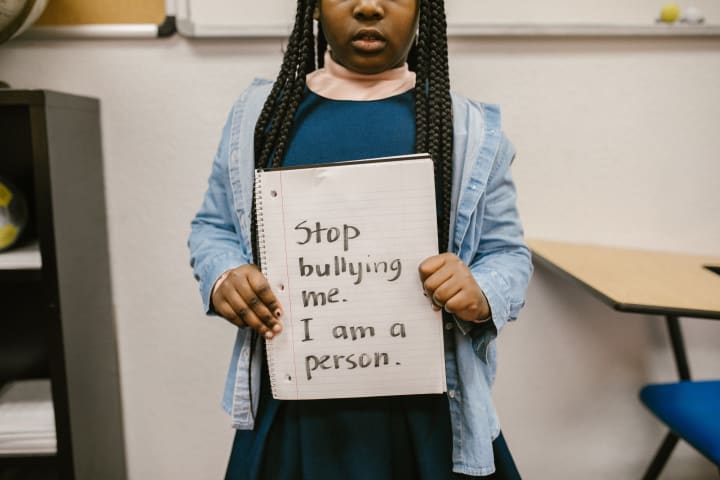Combating Bullying in Schools: Fostering a Safe and Inclusive Learning Environment
Nurturing Empathy, Resilience, and Inclusion: A Comprehensive Approach to Combatting Bullying in Schools

Bullying is a pervasive issue in schools that has long-lasting effects on the well-being and academic success of students. It creates an environment of fear, anxiety, and exclusion, hindering the learning process and compromising students' mental health. It is imperative for schools to take proactive measures to address bullying and foster a safe and inclusive learning environment for all students. This article explores the impact of bullying, the importance of prevention and intervention strategies, and the role of students, educators, and parents in combating bullying.

1. Understanding the Impact of Bullying:
Bullying can have severe consequences on the physical, emotional, and psychological well-being of students. It leads to decreased self-esteem, academic difficulties, anxiety, depression, and in extreme cases, even self-harm or suicide. By recognizing the severe consequences of bullying, schools must take a proactive stance in implementing prevention programs, fostering empathy and inclusivity, and providing comprehensive support services for both victims and perpetrators. Only by addressing bullying head-on can we create a safe and nurturing educational environment that promotes the well-being and success of all students.

2. Implementing Comprehensive Anti-Bullying Policies:
Schools must establish clear and comprehensive anti-bullying policies that outline unacceptable behavior, consequences for bullying, and procedures for reporting incidents. These policies should be communicated to students, parents, and staff, emphasizing a zero-tolerance approach towards bullying. By creating a safe and inclusive school culture through these policies, students are more likely to feel supported and empowered to report incidents of bullying.

3. Empowering Students as Upstanders:
Empowering students to become upstanders rather than bystanders is crucial in combating bullying. Schools should provide students with education and resources on how to recognize and respond to bullying. By providing education on bullying, implementing peer mentoring programs, teaching conflict resolution skills, and promoting social-emotional learning, schools can cultivate a generation of students who actively promote empathy, kindness, and inclusivity. By empowering students, schools are fostering a supportive environment where bullying is less likely to occur and where every student feels safe and valued.

4. Educating Teachers and Staff:
Educators and school staff play a vital role in identifying and addressing bullying. Schools should provide training and professional development opportunities for teachers and staff members to recognize the signs of bullying, respond effectively, and provide the necessary support to both victims and perpetrators. Building strong relationships with students and fostering open lines of communication can help create a trusting environment where students feel comfortable reporting incidents of bullying.

5. Involving Parents and Guardians:
Collaboration between schools and parents is essential in combating bullying. Schools should actively involve parents and guardians through open communication, parent-teacher meetings, and workshops on bullying prevention strategies. By fostering a partnership between schools and families, a united front against bullying can be established, ensuring consistent messages and support systems for students.

6. Creating Safe and Inclusive Spaces:
Schools must provide safe spaces for students to seek support and express their concerns. Establishing designated areas like peer support centers, counseling offices, or anonymous reporting systems can encourage students to come forward without fear of retaliation. Promoting diversity, inclusion, and respect for all students through cultural awareness programs, tolerance education, and inclusive curricula helps create an environment where bullying is less likely to thrive.
Conclusion:
Bullying has detrimental effects on student's well-being and academic success, but schools have the power to address and prevent this issue. By implementing comprehensive anti-bullying policies, empowering students, educating teachers and staff, involving parents and guardians, and creating safe and inclusive spaces, schools can foster a positive learning environment that promotes empathy, respect, and kindness. Together, we can combat bullying and create a future where every student feels safe, valued, and supported.
About the Creator
Md Ammar Alam
Engaging writer creating thought-provoking content for curious minds.






Comments
There are no comments for this story
Be the first to respond and start the conversation.